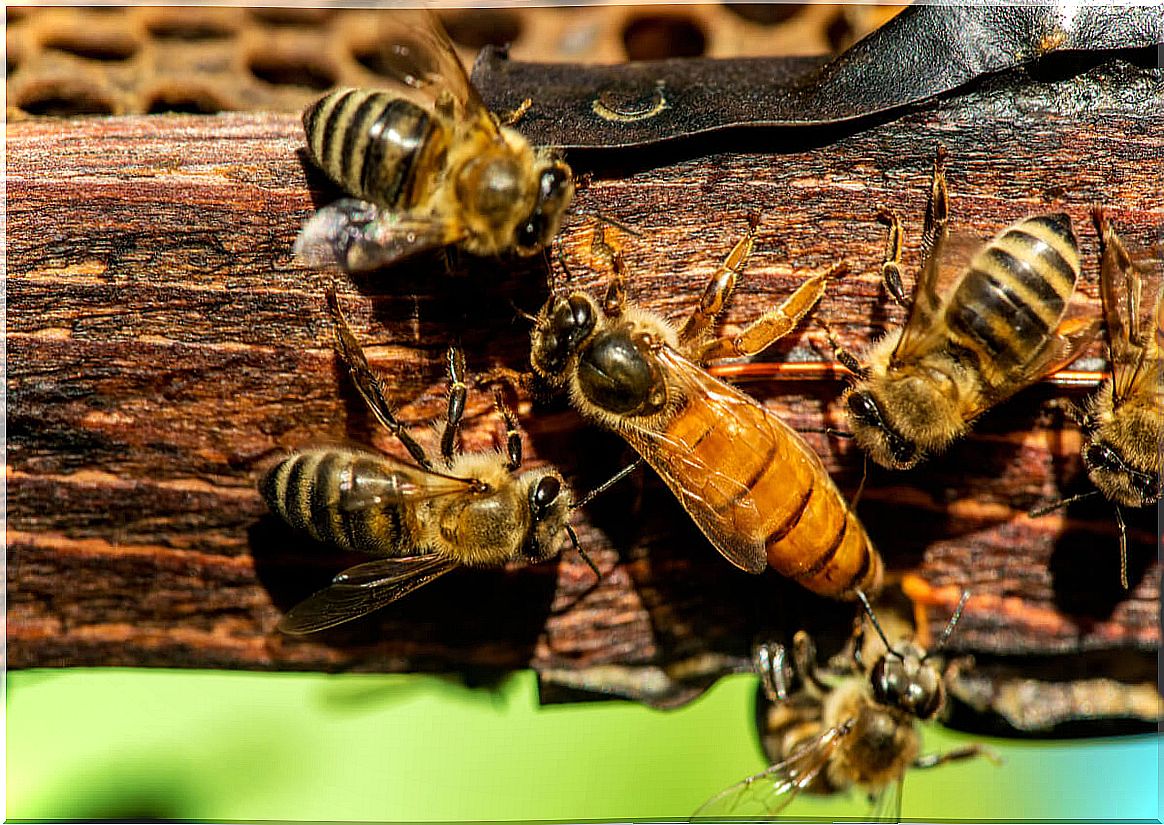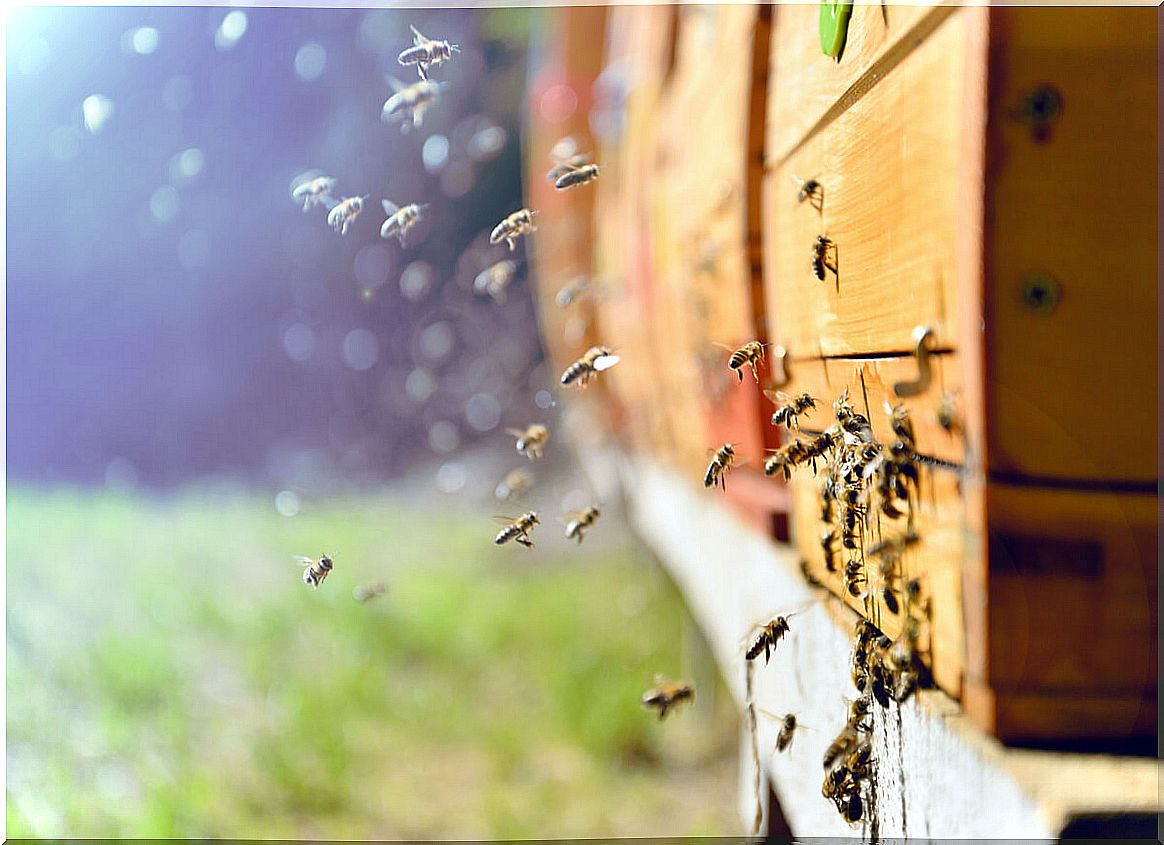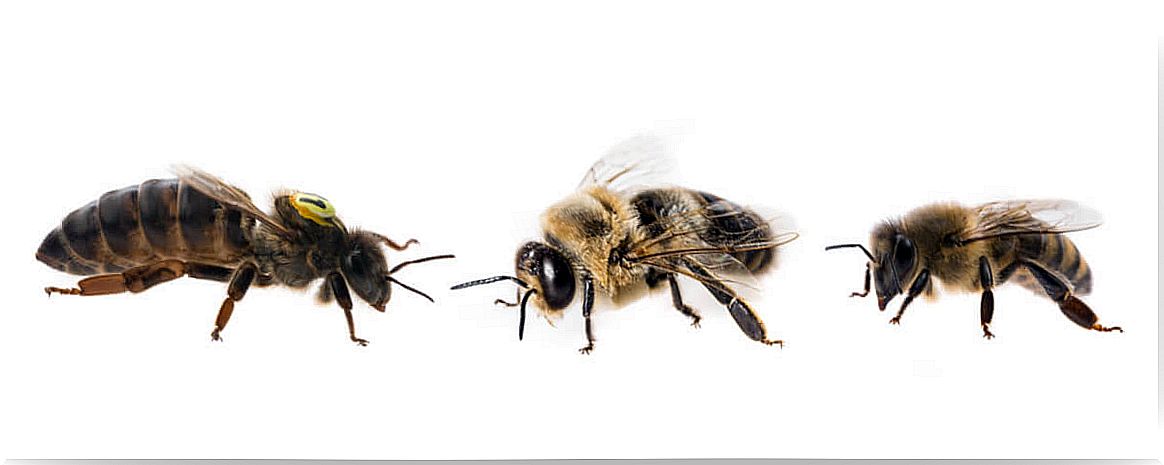Curiosities About The Queen Bee

The bee is one of the most fascinating insects around us. Apart from pollinating flowers and producing honey, their social organization is one of the most complex in the animal world.
In the following lines we will see a series of curiosities about the queen bee, the mother of all the bees in the hive. If you want to know more about this fascinating hierarchy and the cornerstone of the organization, you can read on.
The bee, a very social insect
Bees ( Apis mellifera) are one of the many insects within the so-called eusocials, that is, they have a very complex hierarchical level of society. It should be noted that this level of organization ensures the continuity of the hives, as long as each member of society fulfills their role in it.
The level of complexity of hives is such that many scientists refer to them as superorganisms , that is, as a single living entity. This is so because the place acts as a biological functional unit, since it regulates its temperature and has a common purpose and structure.
Apart from this, bees – individually – are very intelligent, since they can communicate with each other the position of food through the curious dance of bees, described in various investigations.

Breeds in the hive
In hives, there are three castes or types of bees according to their function and morphology:
- The workers, who are infertile females. His tasks include sucking flowers to obtain nectar and make honey. They also make the wax to make the hive and monitor its surroundings. They are by far the largest group.
- Drones, which are fertile males whose sole purpose is to impregnate the queen.
- The queen bee, which we will focus on in the next sections.
The mother of all bees
The queen bee is unique in the hive, since it is the individual that forms it and around which the order is established in it. The queen bee is literally the mother of all bees : her job is to lay eggs and mate with drones.
This peculiar life cycle is possible due to a phenomenon called parthenogenesis. This process, described in a simple way, consists of the queen developing unfertilized eggs, which will be the drones. These will have only one set of chromosomes – haploids.
Royal jelly: a unique food
What differentiates the queen bee from the other females —workers— is its feeding during the larval phase. Royal jelly is the food that future queens receive, a unique substance with incredible properties.
As the larvae are fed with this substance, they acquire the properties and large size that characterize them. Recently, several studies have shown that what “turns” bees into queens is royalactin, a protein found in royal jelly.
Reproduction of the queen bee
The queen bee is a unique individual in the hive, therefore, it is the drones that have to try to mate with it. Mating occurs during so – called fertilization flights.
At this time, the queen bee leaves the hive to fly with the drones and mate. This marquise can mate with several dozen males during the same flight session.
Another of the curiosities of the queen bee is its extraordinary longevity: it can live up to three years, compared to just three months that workers live. This is believed to be due to the properties of royal jelly.
The coronation: the battle of the queen bees
It is important to note that, despite the fact that several larvae are fed royal jelly, there is only one queen bee in the comb. Thus, when these larvae complete their development, there is a fight between queen bees to determine which of them prevails.
The queens who fail to prevail, usually leave the hive to found a new one. This is how the history of this miniature society begins anew: an insect that uses the social hierarchy to survive in time.

In conclusion, queen bees are the top of the social hierarchy in the colony superorganism, and since they are the mother of all bees, their well-being is paramount for the maintenance of the hive.









